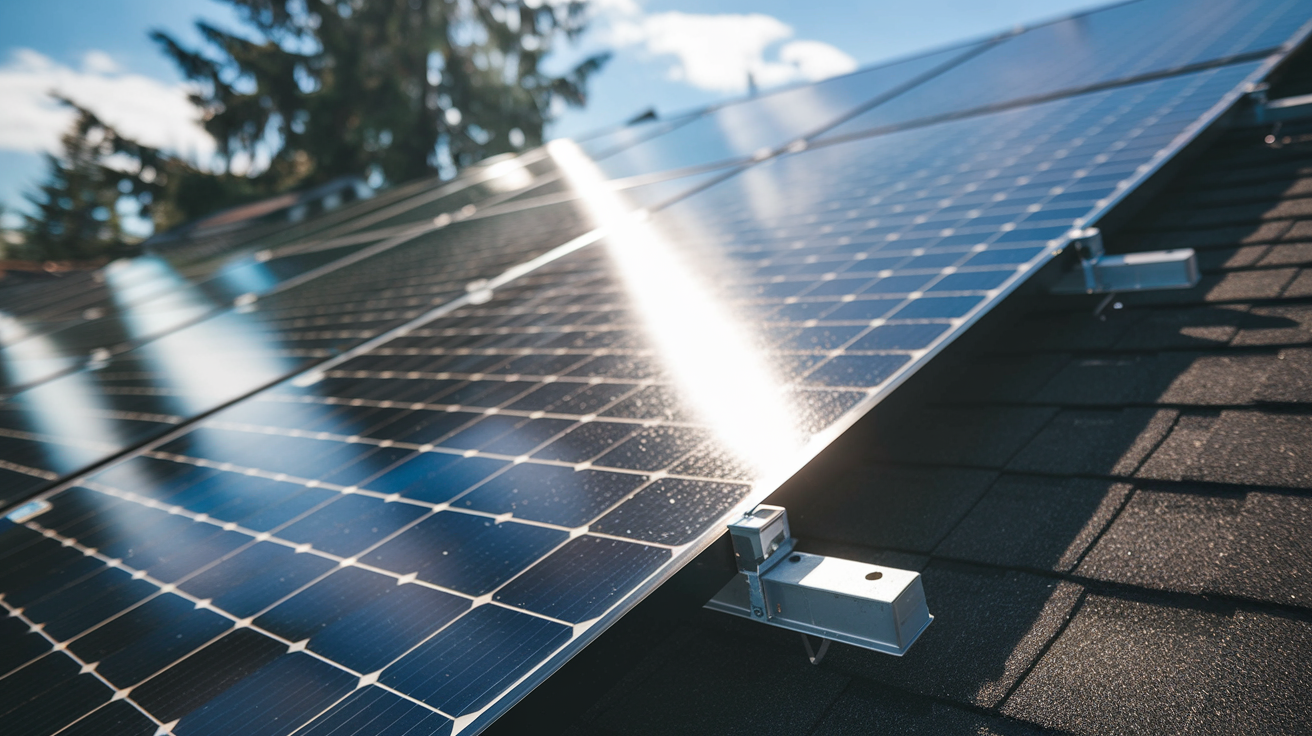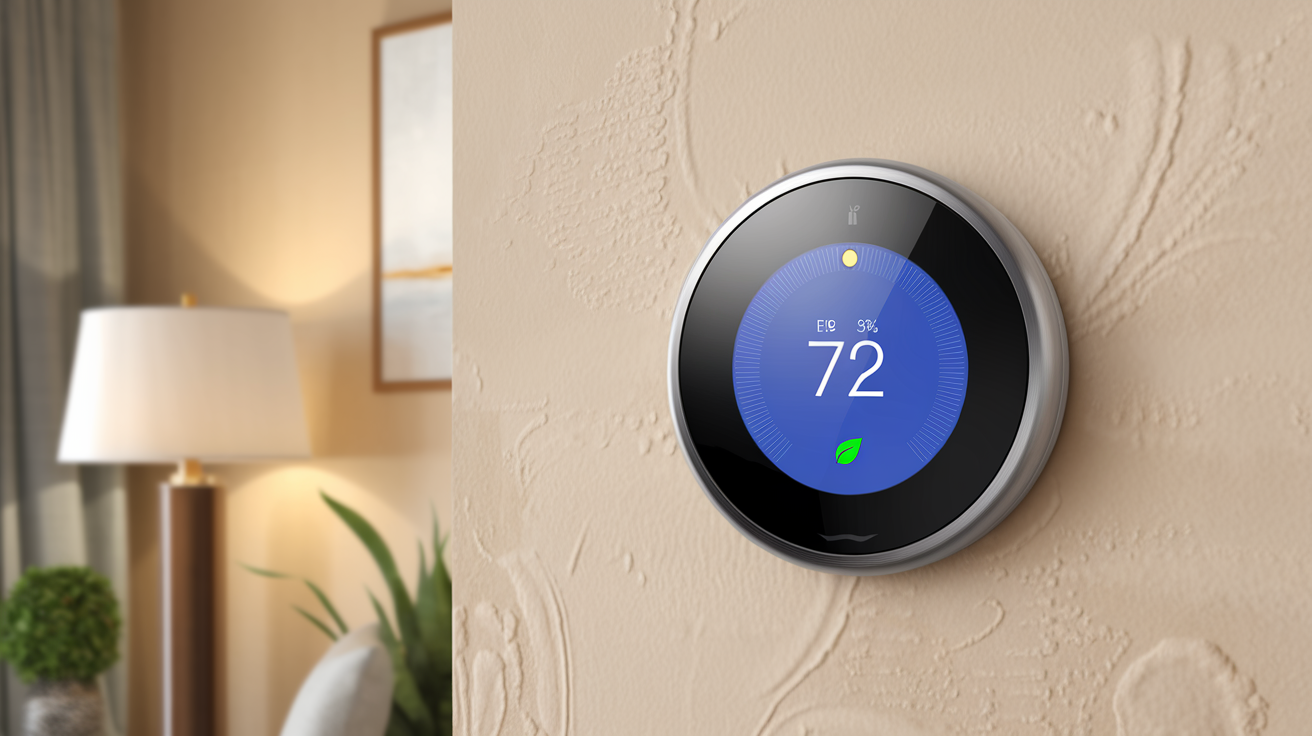Want to increase your home’s value and cut down on utility costs, all while benefiting the environment? Eco-friendly home improvements are an excellent way to achieve this. From solar panels to energy-efficient windows, there are many options that can save money, reduce environmental impact, and make your home more appealing to eco-conscious buyers. Here’s a guide to sustainable home upgrades that are worth considering.
1. Install Solar Panels to Cut Electricity Costs
Solar panels have become one of the most sought-after eco-friendly improvements due to their long-term cost-saving benefits and positive environmental impact. By using sunlight to generate electricity, solar panels reduce your reliance on conventional energy sources, which typically come with a hefty price tag and carbon footprint.
Key Benefits of Solar Panels
- Reduced Energy Bills: Solar power allows homeowners to cut down on their monthly electricity expenses by generating their own energy.
- Tax Benefits and Rebates: Many regions offer tax incentives for installing solar panels, helping offset the initial investment.
- Enhanced Home Value: Homes with solar panels tend to have higher market values and attract eco-conscious buyers.
Initial Cost and Return on Investment
While the average cost to install a solar system is between $15,000 and $25,000, homeowners can typically recover this investment within 7 to 12 years through energy savings. Solar panels also have a long lifespan, usually lasting 25-30 years, providing ongoing savings well beyond the break-even point.
2. Boost Insulation for Year-Round Efficiency
Proper insulation helps maintain comfortable indoor temperatures, reducing the need for excessive heating in winter and cooling in summer. Improving your home’s insulation is one of the most effective ways to increase energy efficiency and lower utility bills.
Benefits of Upgrading Insulation
- Lower Utility Costs: Better insulation reduces the strain on heating and cooling systems, cutting down on energy use.
- Improved Comfort: Quality insulation minimizes drafts, keeping your home warm in winter and cool in summer.
- Eco-Friendly Options: Modern insulation materials like recycled denim or cellulose provide eco-friendly options that contribute to sustainability.
Choosing Sustainable Insulation Types
- Cellulose Insulation: This insulation is made from recycled paper products, offering an eco-friendly alternative.
- Recycled Denim: Made from recycled cotton, this is a chemical-free, safe insulation option.
- Wool Insulation: A natural, biodegradable choice with excellent thermal properties.
3. Energy-Efficient Windows: Retaining Heat and Reducing Costs
Upgrading to energy-efficient windows is a smart way to enhance your home’s energy conservation. These windows reduce heat transfer, making it easier to maintain indoor temperatures and saving on heating and cooling expenses.
Advantages of Energy-Efficient Windows
- Energy Savings: High-performance windows can reduce heating and cooling costs by up to 30%.
- Higher Home Value: Homes with energy-efficient features like windows often attract more interest from potential buyers.
- Noise Reduction: Double- or triple-pane windows provide sound insulation, creating a quieter home environment.
Key Features to Look For
When selecting windows, consider double- or triple-pane options filled with inert gases like argon. Also, look for windows with Low-E coatings, which reflect heat to maintain a comfortable indoor climate.
4. Upgrade to Energy-Efficient Appliances
Switching to energy-efficient appliances can have a major impact on your home’s sustainability. From refrigerators to HVAC systems, newer models are designed to use less power and water than older models.
Why Energy-Efficient Appliances Matter
- Cost Savings: Appliances with an Energy Star rating typically use significantly less energy and water.
- Eco-Friendly: By reducing power consumption, energy-efficient appliances help lower household emissions.
- Modern Look: Newer appliances not only perform better but often come with sleek designs that enhance your home’s aesthetic.
Appliances to Consider Upgrading
- Heating and Cooling Systems: Modern HVAC units with programmable thermostats are more efficient.
- Water Heaters: Tankless or heat pump water heaters are great for energy and cost savings.
- Washers and Dryers: High-efficiency models use less water and energy, with options that adjust to load sizes.
5. Install a Smart Thermostat for Optimal Climate Control
A smart thermostat is a low-cost improvement with a high return on energy savings. These devices adjust automatically based on your schedule, optimizing heating and cooling to reduce energy waste.
Benefits of Smart Thermostats
- Lower Energy Bills: Smart thermostats reduce costs by adjusting to your daily routine.
- Convenience and Control: With app control, you can manage your home’s temperature from anywhere.
- Appeals to Buyers: As a modern, tech-savvy upgrade, a smart thermostat can increase your home’s appeal.
Top models like Nest and Ecobee also integrate with other smart home devices, making it easy to incorporate into existing systems.
6. Install Low-Flow Fixtures to Conserve Water
Water conservation is essential in eco-friendly home design. Low-flow fixtures reduce water usage without sacrificing performance, helping you save on water bills and support sustainable water use.
Types of Low-Flow Fixtures
- Showerheads and Faucets: These fixtures can cut water use by more than half.
- Dual-Flush Toilets: Choose between a half or full flush to reduce water usage.
- Faucet Aerators: These are an easy, affordable way to reduce water flow while maintaining pressure.
Low-flow fixtures not only reduce monthly water bills but align with sustainable living practices, making them attractive to buyers looking for eco-conscious homes.
7. Set Up a Rainwater Harvesting System
A rainwater harvesting system collects and stores rainwater, which you can use for landscaping, flushing toilets, and other non-drinking needs. This sustainable water source is particularly valuable in areas with frequent droughts.
Why Consider Rainwater Harvesting?
- Cost Savings: Rainwater can replace some of your home’s water needs, lowering monthly bills.
- Eco-Friendly: Reducing reliance on municipal water sources helps alleviate demand on local water supplies.
- Added Value for Buyers: In regions where water is scarce, having a rainwater system can make a home more appealing.
8. Create a Green Roof for Insulation and Biodiversity
Green roofs, or living roofs, are rooftops covered with vegetation, providing added insulation and reducing storm water runoff. They’re a beautiful, eco-friendly addition to any home.
Benefits of a Green Roof
- Improved Insulation: Keeps your home warm in winter and cool in summer, cutting energy costs.
- Rainwater Absorption: Green roofs absorb rainwater, reducing runoff and decreasing flood risk.
- Natural Beauty: Besides insulation, a green roof adds a unique aesthetic and fosters biodiversity.
9. Eco-Friendly Landscaping for Curb Appeal
Sustainable landscaping practices improve curb appeal while reducing environmental impact. Using native plants, xeriscaping, and rain gardens creates beautiful, low-maintenance landscapes that support biodiversity.
Sustainable Landscaping Tips
- Native Plants: Require less water and fertilizer, as they’re adapted to the local climate.
- Rain Gardens: Absorb rainwater, reducing runoff and preventing erosion.
- Xeriscaping: Especially valuable in drought-prone areas, xeriscaping minimizes water use with drought-tolerant plants.
10. Use Reclaimed and Sustainable Materials in Renovations
When remodeling, consider using reclaimed or sustainably sourced materials. These choices reduce waste and often add a unique character to your home that buyers appreciate.
Sustainable Material Options
- Reclaimed Wood: Great for flooring, paneling, or furniture with a rustic appeal.
- Bamboo: A renewable, fast-growing material often used in flooring and cabinetry.
- Recycled Glass: Durable and visually distinctive, recycled glass is an excellent option for countertops.
These sustainable choices don’t just look good; they offer an environmentally responsible approach to home renovations.
Final Thoughts: Adding Value with Eco-Friendly Improvements
Eco-friendly home improvements are an excellent way to enhance your property’s value while embracing a sustainable lifestyle. Whether you choose solar panels, rainwater systems, or energy-efficient appliances, these upgrades are both financially rewarding and environmentally beneficial. As more buyers seek homes with eco-conscious features, your investment in green upgrades today could pay off in a big way tomorrow.













